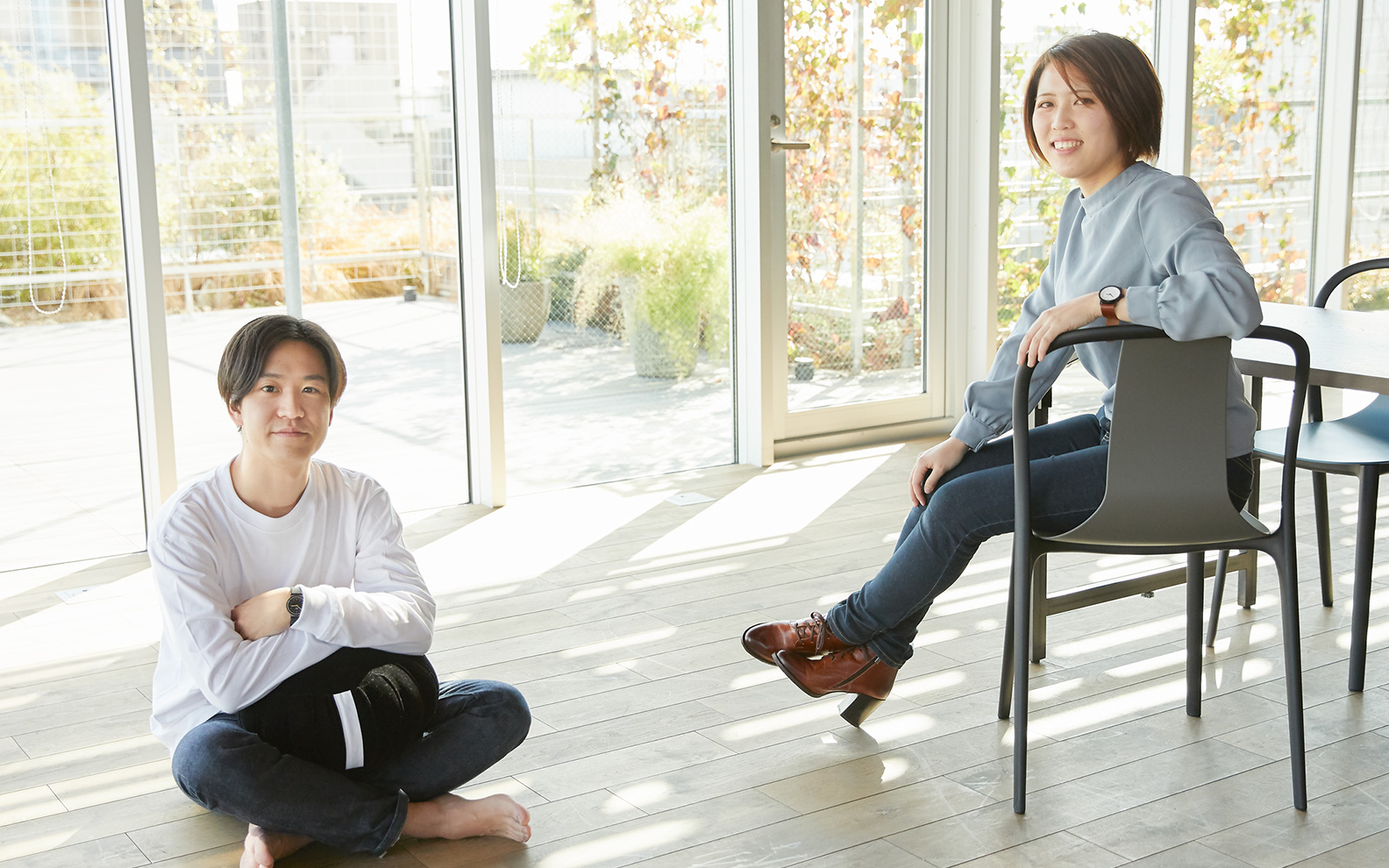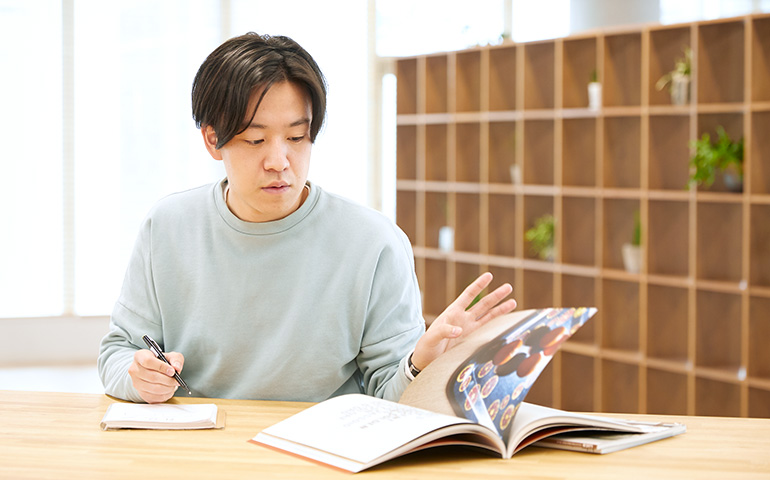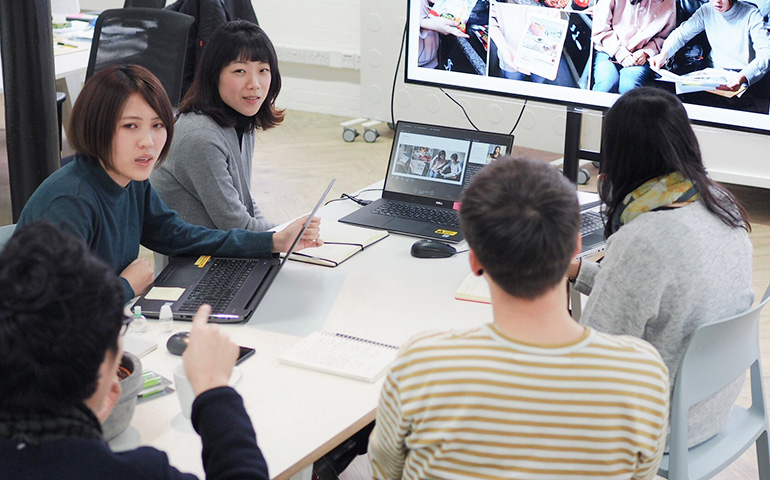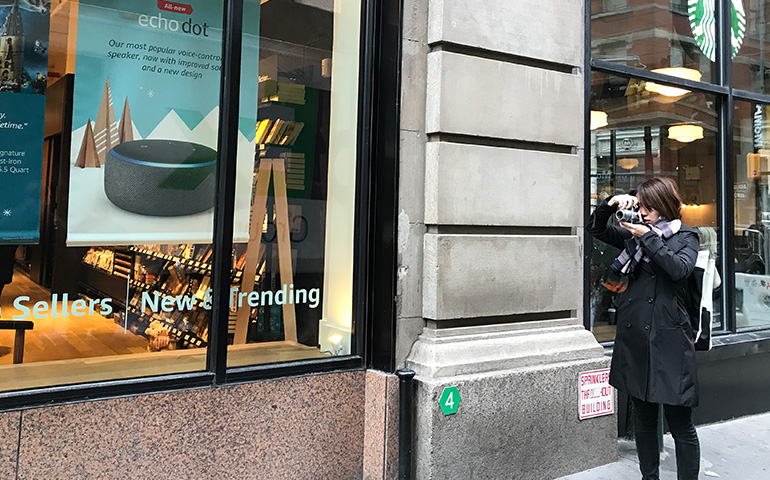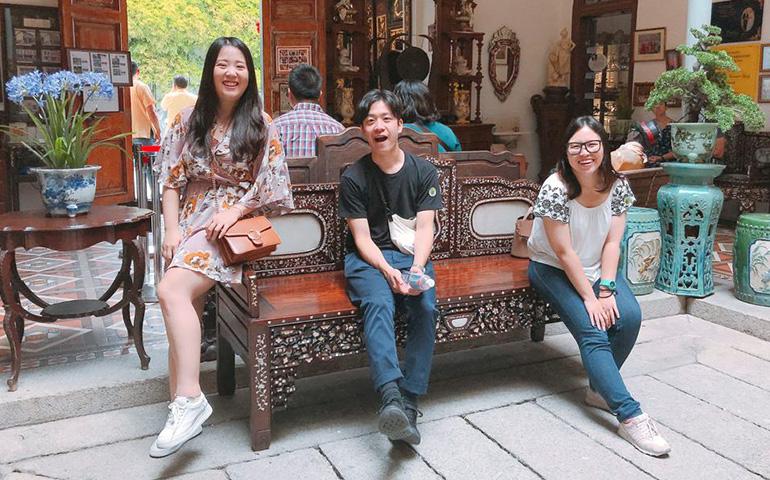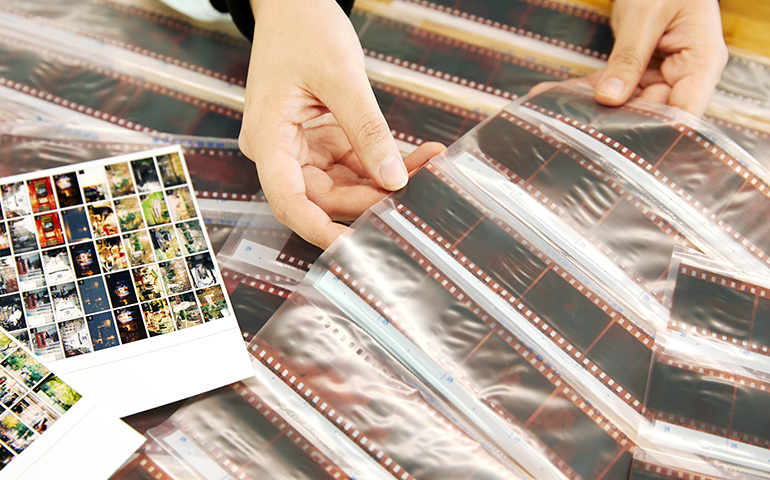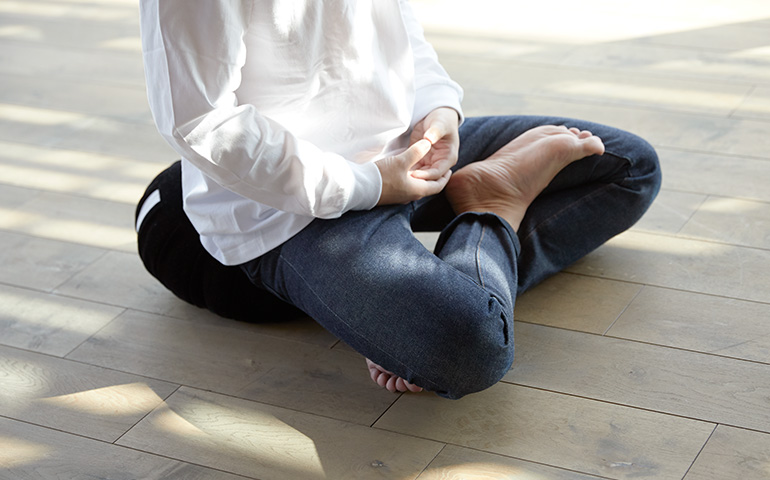Overseas Experience and Two Years in the Journey of a Designer
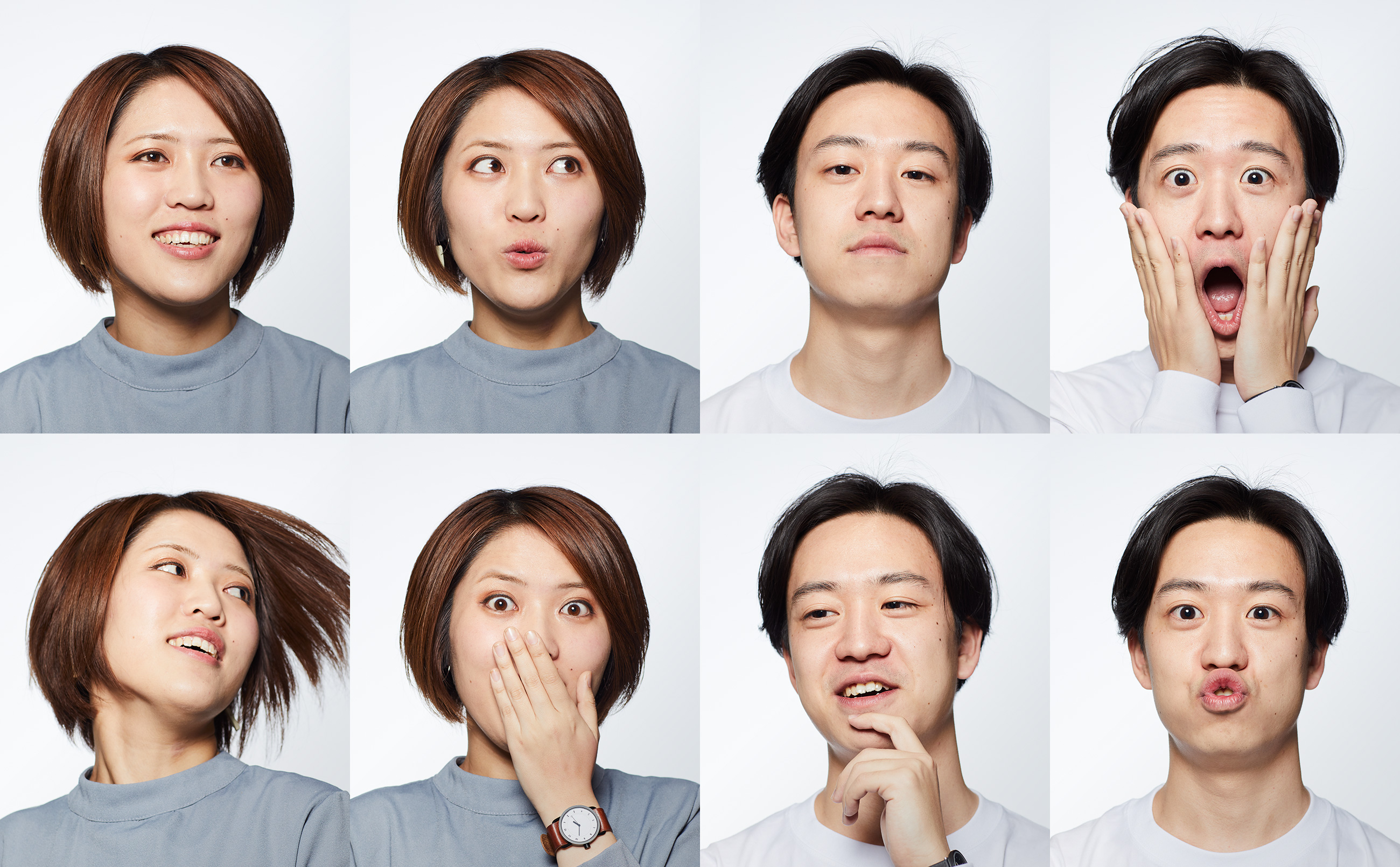
- Yuko Matsumoto
- After graduating from the Kanazawa College of Art, Matsumoto joined Panasonic in April 2017, where she is currently in charge of designing kitchen appliances, such as rice cookers, microwave ovens, and mixers.
- Kotaro Iida
- After graduating from Chiba University, Iida joined Panasonic in April 2017, where he is currently in charge of designing TVs as well as sound bars and other TV accessories.
 The decision to become a designer
The decision to become a designer
Matsumoto: I have always been interested in design and went to an art high school. Before I was aware of the field of product design, I took an interest in how products are made to be used. I noticed, for example, how kettle handles are shaped so they can be held comfortably. I was attracted to designs that are well thought out, but subtle. As my interest in the design of products grew, I decided to become a product designer. I majored in product design in college.
Iida: I studied design in the faculty of engineering. My areas of interest were broad, ranging from service design to spatial design to car design, but I came to like product design the best. In a second-year class we designed vacuum cleaners. I worked very hard on my design, but upon examining it my professor remarked, “You could have made a cooler one.” This motivated me to come up with a design that would really impress him. The moment was fundamental to my becoming a designer.
Reasons for choosing Panasonic
Matsumoto: Although they don’t often grab your attention, household appliances are fundamental to our daily lives. I wanted to make appliances more attractive through the power of design. During an internship at Panasonic I felt there were a lot of passionate people working here and imagined that working with them would be a lot of fun. That’s why I’m here.
Iida: I wanted to work for Panasonic because it’s a manufacturer that I feel represents Japan. Japanese manufacturing used to lead the world, but it seems to have lost some of its vigor. I wanted to be part of the reinvigoration of Japanese manufacturing. I knew that Panasonic provides a vast range of household appliance product lines globally and wanted to be involved in designing products that speak to the world about Japan. That was my motivation for joining the company.
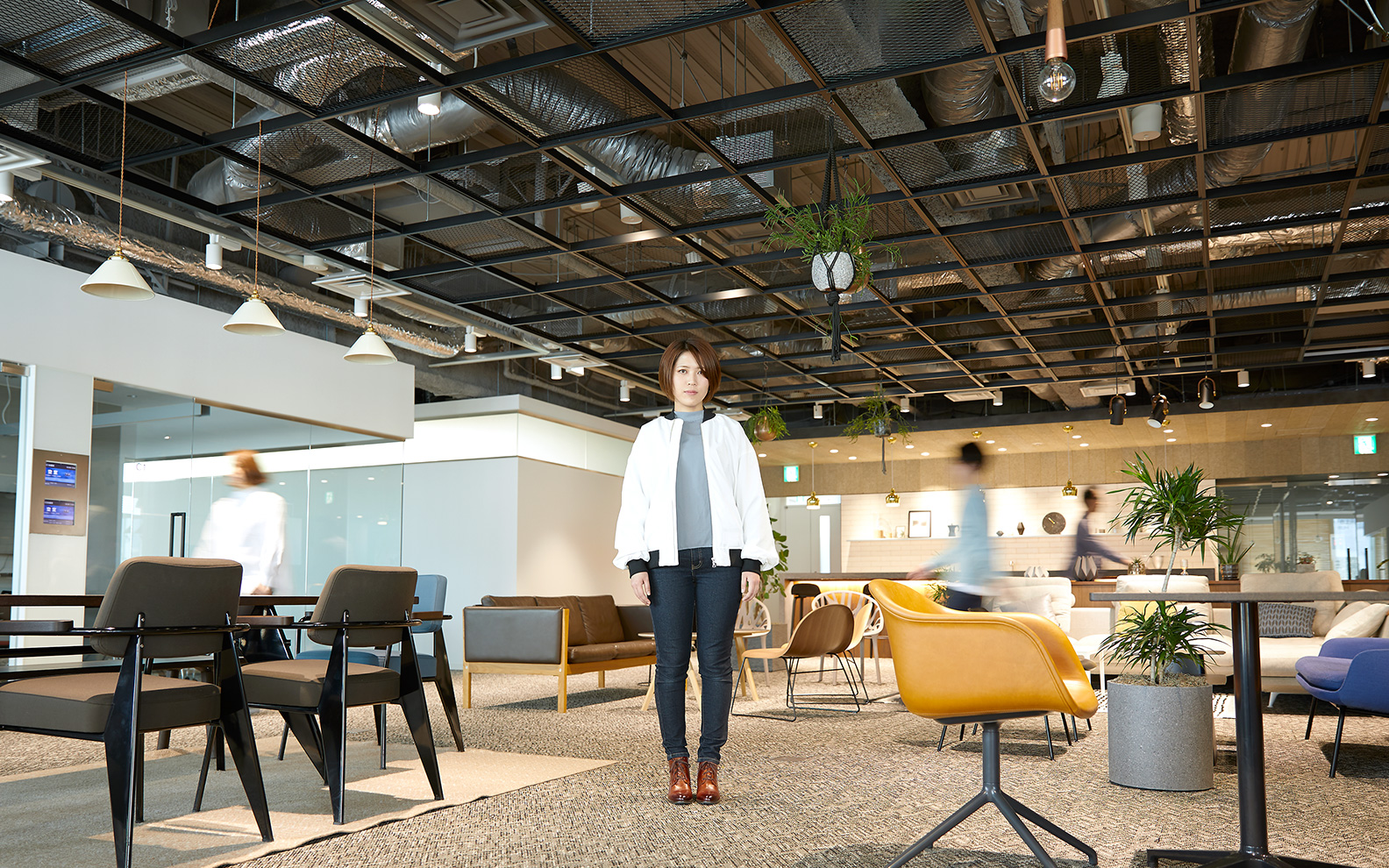
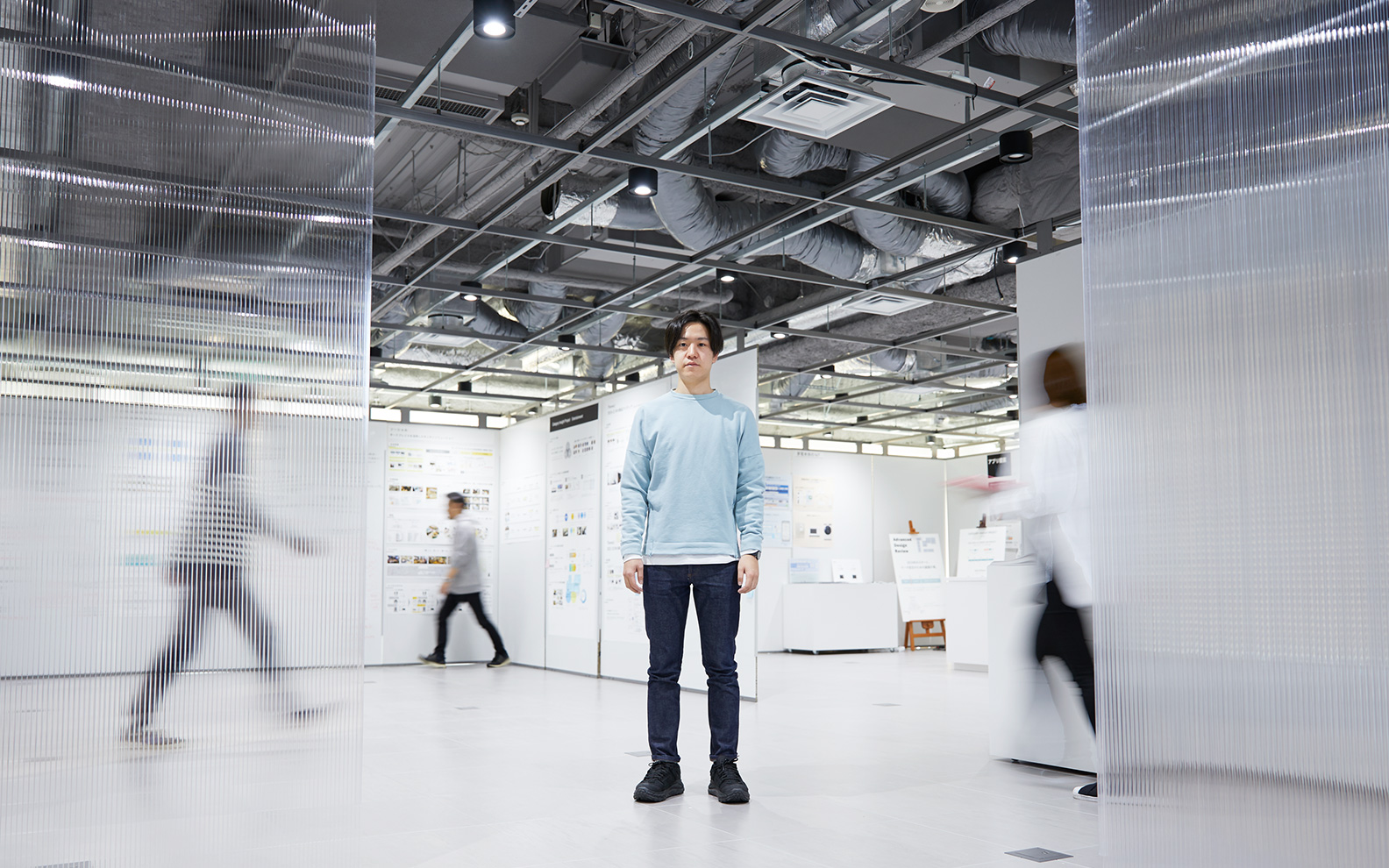
Perceptions of the company before and after joining
Matsumoto: Before joining Panasonic I saw the company as rather old-school. I expected that, as a new employee, I would be doing a lot of simple, tedious tasks. I was surprised, to find that, right away, I was involved in advanced development and overseas projects—really interesting work.
Iida: I was put in charge of designing new products immediately upon joining the company. I was amazed that they would put a raw recruit like me in charge of such an important task. Of course, my senior colleagues had my back, but it was still amazing. What’s more, all new employees got to go to Germany for the IFA exhibition. The trip was exciting, but it was also daunting to be experiencing the world first-hand.
The challenges of working overseas
Matsumoto: I participated for a month in a global strategy project for kitchen appliances in London and New York. I conducted interview-based surveys and held ideas workshops with local residents, which was really challenging because my English was quite basic. I had a hard time communicating, though my listening comprehension improved quite a bit as a result of the experience! I was impressed with how efficiently business is conducted in those countries. For example, the goals of meetings are clearly conveyed and thoroughly addressed within the allotted time. I also became keenly aware of just how important it is to express your opinions.
Iida: As part of my work in designing TVs for 2020, I spent a month in Kuala Lumpur gathering ideas through surveys and examining specific plans with our sales teams from other parts of Asia. Our surveys involved interviewing sales personnel in shops, which allowed me to get a sense of the preferences of local people. I saw many products from manufacturers that you don’t see in Japan, which was really stimulating. I want to keep tackling the big issue of how Panasonic can compete with leading overseas manufacturers in Asia.
The value of design
Matsumoto: I try to keep in mind the perspectives of both the manufacturer and the consumer. As a provider of goods I strive to come up with interesting ideas and to create ground-breaking functions for the products I’m designing. But at the same time as a consumer I try to think rationally about whether these functions are really desirable or necessary. I attach great importance to the process of getting rid of excess and delivering the truly essential. Going forward, I want create products that blend in with our daily lives, that seamlessly make people feel good and improve our lives.
Iida: I try to evaluate product designs not based on my personal preferences, but on whether they deliver on the concept of the product. I learned this approach from a senior colleague. I think it is important to look at a product after designing it and to ask yourself if it faithfully expresses the concepts behind it. I hope to make proposals and design products that enrich people’s imaginations and expand our possibilities. And I would love to create at least one timeless design in my lifetime.
Working in Kyoto
Matsumoto: One of my hobbies is photography, so when I have time off I often wander around Kyoto with my camera. Kyoto is full of splendid traditional cultural artefacts, but it is also a showcase of modern design trends. This blend of old and new makes Kyoto a unique environment that I treasure.
Iida: Kyoto offers a particularly refined, sophisticated form of Japanese culture. Whenever possible, I try to get out of the office and directly feel Kyoto. Since coming to Kyoto I’ve had opportunities to engage in Zen meditation with colleagues. This motivated me to buy a zafu (round meditation cushion) and meditate at home. When I get too occupied with work, meditation clears my head and refreshes me. Another thing that I appreciate about Kyoto is that young designers from all over the country have joined Panasonic here, giving me lots of opportunities to communicate with like-minded individuals.
Advice for aspiring young designers
Matsumoto: I think you should have something in mind that nobody else wants—but that you want passionately. It’s when you are a student that you’re most free to pursue things you really love. Oh, and I wish I had studied abroad!
Iida: There is a broad range of design fields—spatial design, service design, UI/UX design, and more. Some kinds of designs aren’t really about making things. I think you should seek out many experiences to discover what you are attracted to, what most excites you. Then, when you find it, run with it!
